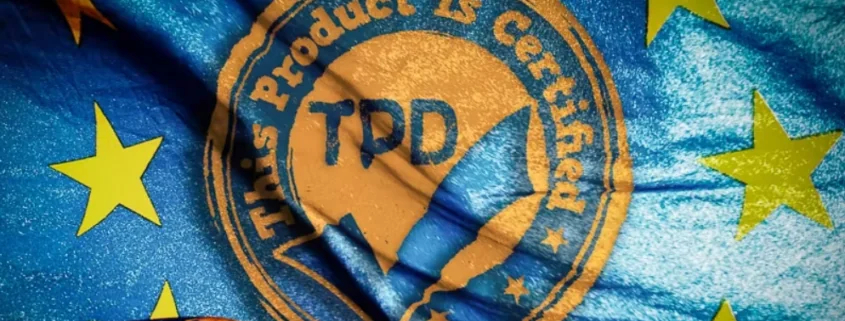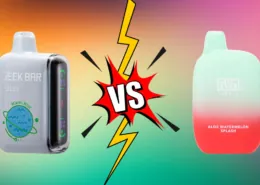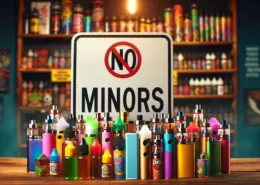What is TPD and How Does it Affect Vaping in Europe
TPD, also know as Tobacco Products Directive. This directive was put in place by the European Union to limit the sale and promotion of tobacco and related products throughout the EU. Originally established in 2001, and updated in 2014 to include e-cigarettes. So, whether you’re a smoker or vaper, the TPD is an important policy to be aware of.
What is TPD?
The TPD, which stands for Tobacco Products Directive, is a legislative act implemented by the European Parliament and the Council of the European Union to regulate the production, manufacturing, and sale of e-cigarettes, e-liquids, and other vaping products. It aims to ensure sanitary and safety measures are being followed in the production and distribution of these products.
The directive was introduced in 2014 and came into effect in 2016 in France, which was 13 years after the first e-cigarette took shape in China in 2003. Its main focus is to regulate the vaping industry and its products, and the directive provides regulations and guidelines for countries who have signed the directive as members of the European Union.
What is the purpose of TPD?
The main purpose of the TPD is to regulate the vaping market and the production of e-cigarette products. As vaping emerged relatively recently in Europe in 2010 and gained popularity in just a few years, governments and legislative institutions took it upon themselves to regulate and oversee the practice. The objective is to protect vapers and ensure the production of high-quality e-cigarettes and e-liquids.
The TPD aims to prioritize the inhalation of safe vapor, the vaporization of harmless e-liquids, and the ability to vape without any danger. Many regulations of the TPD are included in the French Public Health Code, ensuring that products comply with safety and health measures.
The content of the TPD
The TPD mainly regulates vaping products, especially e-liquids that contain nicotine. But it also applies to the cartridges used in mods pods, pyrex tanks of clearomizers, and other devices that have mouthpieces (drip tips) for inhaling nicotine-containing vapor. This means that the TPD aims to ensure that all the products related to vaping are produced and sold in a way that is safe and healthy for consumers, and that they meet the regulations set forth in the directive.
The regulation on nicotine in e-liquids
One of the primary regulations of the TPD concerns the e-liquids that are used with e-cigarettes. The directive states that the nicotine concentration in a 10 ml bottle of e-liquid should not exceed 20 mg/ml.
Moreover, the European and French laws also prohibit the sale of e-liquid bottles containing nicotine that have a capacity exceeding 10 ml. However, it’s not an issue for bottles that contain e-liquids without nicotine. Hence, the bottle of juice should not exceed 10 ml if it contains nicotine.
Additionally, disposable cartridges used in pods should not contain more than 2 ml of e-liquid if it has nicotine in it. This regulation helps to ensure safe consumption practices and protect vapers’ health.
The regulation on packaging of vaping products
The packaging and bottling of e-liquids must also comply with strict regulations set by the Tobacco Products Directive. These measures oblige the manufacturers to:
- Declare all the ingredients that make up the e-liquid;
- Include the level of nicotine in the e-liquid;
- Indicate the ratio of propylene glycol (PG) and vegetable glycerin (VG);
- Have a batch number;
- Provide safety recommendations (such as keeping the bottle out of reach of children);
- Include a health warning to prevent the vaper from getting addicted to nicotine.
All e-liquids that you buy must come with a user manual that explains:
- How to use the product and the storage rules;
- The contraindications;
- The warnings for people at risk;
- The possible side effects;
- The impact of nicotine and its addictive effect;
- The company’s contact details that produce the e-liquid or the importer of the product.
All e-liquid bottles must have a child safety feature as well. Nevertheless, we recommend keeping your vaping equipment out of children’s reach. Several e-cigarette devices now have a locking system, similar to that of a smartphone, which prevents accidents.
Checks the quality of e-cigarette liquids
The European directive requires each country to control the quality of vaping products. In France, it is the responsibility of ANSES (the national agency for food, environmental, and occupational health safety) to verify the level of harmfulness of e-liquids.
Every manufacturer must submit a notification file six months before the e-liquid is released for sale. This file must provide information on the bottle’s composition, toxicological data, and manufacturing process. This ensures that the e-liquids meet the safety and health regulations set by the TPD, and they are safe for consumers to use.
Prohibits advertising and promotion of vaping
The regulation on e-cigarettes indeed prohibits promoting vaping. Advertising is strictly prohibited in Europe. This is why you don’t see ads for e-cigarettes and their benefits.
Article L3513-4 of the French Public Health Code also prohibits the promotion of vaping. This includes any direct or indirect propaganda.
- Direct advertising: public displays, products in shop windows, ads in magazines or in the media.
- Indirect advertising: propaganda on networks, contests, commercial offers …
However, this rule on the promotion of e-cigarettes does not apply to everyone.
Vaping professionals such as manufacturers and sellers of vaporizers and e-liquids can advertise their products. However, this only applies to online communication. In addition, advertising should only target vapers.
Vaping Laws in Europe
All countries of European Union followes the TPD regulation.
France follows the rules of the TPD. However, it adds certain points such as the prohibition of vaping in enclosed public places, such as schools and public transport. And also the E-cigarettes are prohibited for those under 18. Only adults can purchase and use a vape.
Also in Spain, they follow the TPD and add some extra rules in their own country. Please read:
Why create laws on vaping?
The goal of TPD is to protect you from any unnecessary health risks. Unlike combustible cigarettes, e-cigarettes are better.
The fact that e-liquid does not contain tar or carbon monoxide alone preserves your health. Likewise, vaping does not involve the combustion of tobacco. As a result, the dangers of smoking are clearly eliminated. The vapor from an e-cigarette is even 95% less harmful than the vapor from a regular cigarette. This is a report from Public Health England on the effects of vaping.
Moreover, many pulmonologists and tobacco experts, as well as increasingly recent scientific studies, argue that vaping is less harmful than smoking. This is why e-cigarettes are an effective aid in smoking cessation. In the UK, for example, e-cigarettes are considered as nicotine substitutes like those sold in pharmacies and can be prescribed by a doctor.
But like any new product on the market, it must be regulated to preserve its benefits. Otherwise, it is an opening door to mediocre devices and poor quality products. When you buy an e-cigarette validated by vaping experts (such as e-cigarette shops) and e-liquids followed the TPD rules, you are sure to inhale excellent quality vapor. And this is essential.
Consequences of TPD
The Tobacco Products Directive has no negative consequences for the vaping industry. Its rules make sense because the aim is to offer you products of impeccable quality.
And it’s still better when you want to start vaping. All European countries have the TPD as the legal basis and adjust their legislation according to their own vision of vaping.
Thus, the United Kingdom is more “open” regarding the use of e-cigarettes. It tends to consider it as a solution to fight against the dangers of smoking. On the contrary, some countries like Finland ban the sale of flavored products, and only nicotine-containing bases are allowed.
Not all countries agree on TPD
While e-cigarettes are proving beneficial in the medical sector, not everyone sees them in a positive light. Of course, logic reminds us that it is always better to inhale air than the vapor of an e-cigarette.
However, in the perspective of anti-smoking advocacy, e-cigarettes are an effective solution. In France, 1.6 million people have successfully quit smoking with e-cigarettes according to France vapotage. Smokers are not smoking 4 to 5 billion cigarettes a year thanks to vaping.
The usefulness of vaping can no longer be ignored. Its effectiveness in smoking cessation is real. While scientific studies are still cautious, they are increasingly numerous.
However, not all European countries welcome e-cigarettes and the TPD in the same way.
As mentioned earlier, France, the United Kingdom, and Germany remain fairly open to the use of e-cigarettes in public spaces. Other countries such as Norway and Finland are more reluctant and prefer not to consider the e-cigarette as an effective means to fight smoking.
Conclusion
To sum up, here’s what you need to remember about TPD:
- It regulates the manufacturing, production, and sale of e-liquids.
- It ensures the high quality of your vaping products.
- It fights against the dangers of low-quality e-cigarettes.
- It ensures that no toxic substances form part of your vape juices.
- It protects minors and non-smokers.
- It protects vapers and smokers who want to switch to e-cigarettes.
At Ecigator, we always follow the TPD rules for the products exporting to Europe. When you buy our vaping products, you are sure that your vaping break will be excellent.
- Austria Plans to Ban Disposable E-Cigarettes - August 5, 2025
- Vaping vs. THC Drinks: Which Cannabis Option Is Right for You? - August 4, 2025
- Colombia’s New Vape Law: A Reality Check on Enforcement - August 4, 2025







